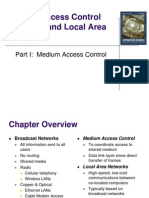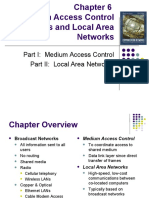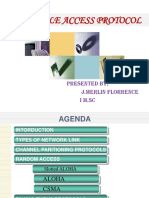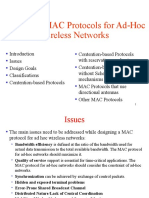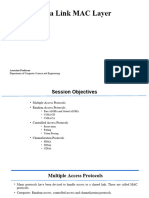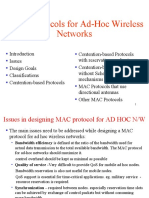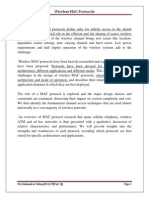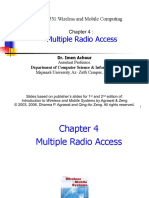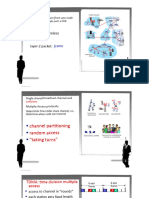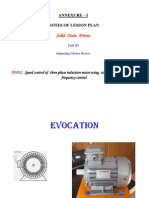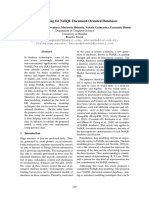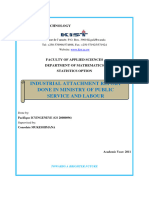0% found this document useful (0 votes)
109 views23 pagesAloha For Class
This document discusses multiple access protocols, which are distributed algorithms that determine how nodes on a shared communication channel can transmit without interference. It presents several random access protocols, including ALOHA, carrier sense multiple access (CSMA), and their variations. These protocols use decentralized methods like carrier sensing, random delays, or time slots to manage channel access without centralized coordination. The document also categorizes common multiple access protocols and provides diagrams to illustrate frame collisions and vulnerable windows.
Uploaded by
etasureshCopyright
© © All Rights Reserved
We take content rights seriously. If you suspect this is your content, claim it here.
Available Formats
Download as PPT, PDF, TXT or read online on Scribd
0% found this document useful (0 votes)
109 views23 pagesAloha For Class
This document discusses multiple access protocols, which are distributed algorithms that determine how nodes on a shared communication channel can transmit without interference. It presents several random access protocols, including ALOHA, carrier sense multiple access (CSMA), and their variations. These protocols use decentralized methods like carrier sensing, random delays, or time slots to manage channel access without centralized coordination. The document also categorizes common multiple access protocols and provides diagrams to illustrate frame collisions and vulnerable windows.
Uploaded by
etasureshCopyright
© © All Rights Reserved
We take content rights seriously. If you suspect this is your content, claim it here.
Available Formats
Download as PPT, PDF, TXT or read online on Scribd
/ 23









